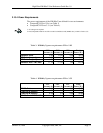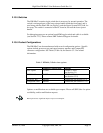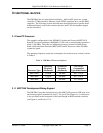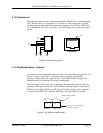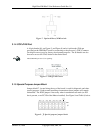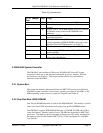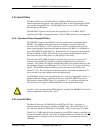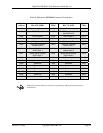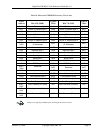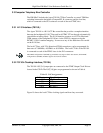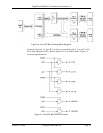
HighWire HW400c/2 User Reference Guide Rev 1.0
If a PCI-X 133 card is installed in Site B, it may be forced to 100 MHz, by installing the LPCI jumper at
(see Section 3.1.5).
o
st PCI bus, that is, the two
uses can operate at different speeds and bus widths.
from being installed by a voltage key residing at each site (see Section
.10.3).
3.2.5 Serial EEPROM
uch
the CPLD. See
ections 4.2.25 to 4.2.28 for details on accessing the EEPROM.
P
ddress. U-boot use the remaining addresses (0x30-0xFF) for boot parameters.
t 0 registers. In Table 9, the MAC address is represented by the sample
number 00:A0:D6:12:34:56.
J7
Module presence is detected by the state of the BUSMODE1 pin. Interrupts from
either of the two sites are fed through the MV64462 GPIO pins, and can be routed t
either the on-board processor or through the host PCI bus to the CompactPCI host
processor. The local PCI bus is independent of the ho
b
The local PCI Bus I/O voltage is connected to 3.3 volts only. Therefore, PTMC
modules with 5-volt only I/O signals cannot be used on the HW400c/2, and are
prevented
!
2
The HW400c/2 includes a 4 K-bit non-volatile EEPROM for storing small items s
as IP addresses and board serial numbers. This device is the Atmel AT93C66A,
which is organized in a 256 x 16-bit format. The EEPROM is accessed through
CPLD registers, which control a read/write state machine within
S
Table 9 and Table 10 summarize the contents of the EEPROM. The first 16
addresses (0x00-0x0F) are written by SBE when the boards are manufactured, and
must not be modified. Space is reserved in the next 32 addresses (0x10-0x2F) for a
total of 16 IP Addresses, beginning with the board IP address and the Gateway I
a
Boot software must read the MAC address from the serial EEPROM and subsequently assign the value
to the MV64462 Ethernet Por
October 10, 2006 Copyright 2006, SBE, Inc. Page 19



